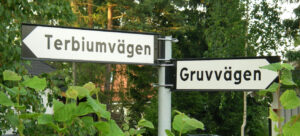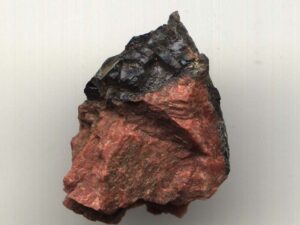
If you’ve ever had the (dis)pleasure of having to memorize the periodic table for any of your chemistry classes, you may have noticed patterns along the way. All the noble gases except helium end in “-on”, elements 92-94 are named after planets, and all the halogens end in “-ine”, just to name a few. But one of the more curious trends pops up when you look at the so-called “rare earth” elements, specifically numbers 39, 65, 68, and 70– yttrium, terbium, erbium, and ytterbium, respectively. That’s pretty odd, right? It reads like someone was paid by the word to design the periodic table, and at a glance you’d think they were all named after the same thing. You would be correct. They are all named after Ytterby, a small mining town outside of Stockholm, Sweden, and the home to more elemental discoveries than any other place on the planet.
The Ytterby mine is an impressive place in its own right. It was active from the 1600s all the way to 1933, and then served as a fuel storage facility for the Swedish military until it was closed and rehabilitated in 1995. During active mining in 1787, Carl Axel Arrhenius (no, not that Arrhenius) found a heavy little black mineral in the rockface, standing in stark contrast to the usual red and white veins around it. Unsure of its composition, he sent it to several of his chemist buddies for analysis. It took a little while to figure out, but the bottom line was this: a chemist named Johan Gadolin said in 1794 that up to 38% of the Ytterby stone contained previously unknown “earth”, or elements. Imagine the conversation! “Hey Carl? This rock you find is, like, mostly stuff we don’t know about yet…”

Because even the idea of a chemical element hadn’t been established at this point, the descriptions from these scientists can sound a bit strange. They called the mineral gadolinite, then ytterite, then isolated it into “yttria” and “ytterbia”, and so on. This, combined with the fact that rare earth elements are all very similar chemically and are almost never found by themselves in nature, makes isolating them extremely challenging. Over the next 100 years, as Mendeleev’s periodic table was developed and chemical techniques were refined, the gadolinite ore yielded a dazzling amount of as-yet undiscovered elements. The previously mentioned yttrium, terbium, erbium, and ytterbium, yes, but that’s not all! The discoveries of scandium, holmium, thulium, gadolinium, and tantalum can also be traced back to the mine at Ytterby.
Today, the Ytterby mine stands as a natural monument and was named by the European Chemical Society as a historical landmark in 2018. Because of this, you can’t take any gadolinite souvenirs with you, but you probably wouldn’t want to anyway. As the Ytterby mine’s website notes, “it is slightly radioactive.”
Peer editor: Micah Hysong